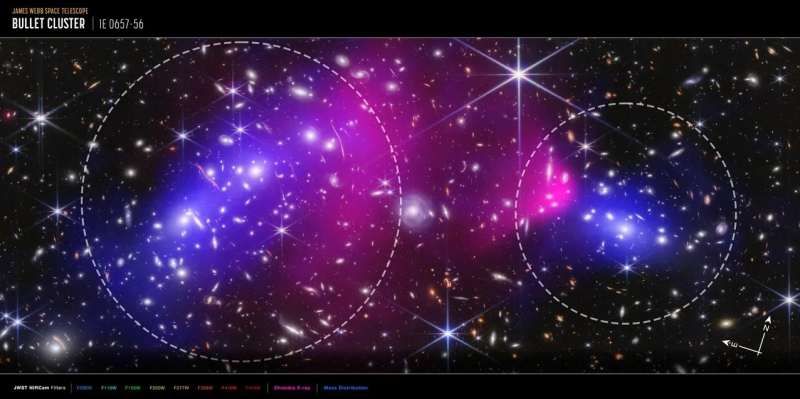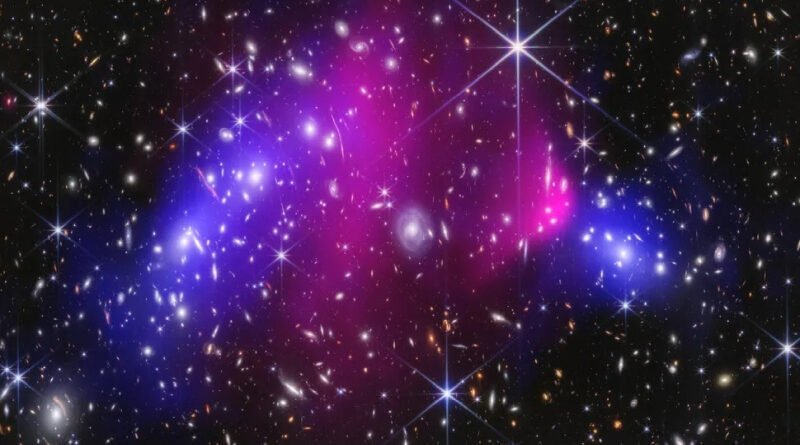James Webb Captures Bright Collision of Two Galaxy Clusters
NASA’s James Webb Space Telescope (JWST) has beamed back a stunning image of the so-called Bullet Cluster, a cluster of two separate galaxy clusters colliding with each other. The image, taken with the Chandra X-ray Observatory and located 3.9 billion light-years from the Sun, could point the way to unlocking the secrets of dark matter.
The Bullet Cluster is one of the most famous and studied galaxy clusters, located in the constellation Carina at a distance of 3.8 billion light years from Earth. It consists of two massive clusters that collided with each other, creating unique conditions for studying cosmic processes. This collision resulted in the ejection of a mass of hot gas, which can be observed using X-ray telescopes such as Chandra.
One of the most interesting aspects of the study was the determination of the mass of galaxy clusters using gravitational lensing. When light from distant objects passes near massive structures, such as galaxy clusters, its path is distorted by gravity. This distortion allows astronomers to “weigh” such structures, determining their mass and the distribution of dark matter.

Despite the new data from James Webb, scientists are still unable to determine the speed at which the two galaxy clusters collided. “Even with these updates, the required collision speed remains high compared to what we expect from cosmological modeling,” said a researcher.




